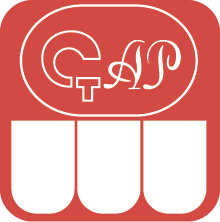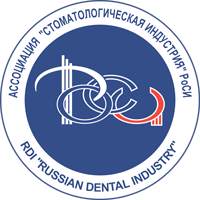DOI:
10.37988/1811-153X_2025_1_186Comparative characteristics of antimicrobial properties of titanium dioxide coating in the anatase form on the surface of titanium and its alloys
Downloads
Abstract
Products from titanium and its alloys are actively used for the reconstruction of the musculoskeletal and maxillofacial systems of the body. However, in some cases, their rejection is observed, which is associated with the addition of bacterial infections. To accelerate the process of osseointegration, various methods of surface treatment are used, including sandblasting, which creates a certain microrelief, as well as the deposition of a bioactive coating of titanium dioxide (TiO2) with the anatase structure. Since the method of TiO2 formation, namely atomic layer deposition (ALD), has a certain sensitivity to the structure and chemistry of the initial surface, especially in the low-thickness range, the characteristics of the coating may depend on the implant material. Therefore, the purpose of this study is to evaluate the antiadhesive and antimicrobial properties of titanium and its alloy samples, taking into account the differences in their structure and type of surface treatment, including the formation of a TiO2 coating with anatase crystalline structure.Materials and methods.
In order to quantitatively evaluate the in vitro microbial adhesion to samples of Grade 4 titanium (ASTM F67) and Ti6Al4V (ASTM F136)/Ti6Al7Nb (ASTM F1295) alloys with different surface treatments, authors used microbiological, molecular biological methods and statistical analysis.
Results.
The work studies samples of titanium and its alloys with various surface preparation, that can be used for orthopedic treatment. Comparative assessment was carried out for the first time which included adhesion of sanitary-significant microorganisms (for example, S. aureus, E. coli) and anaerobic bacteria to the studied samples. The lowest level of adhesion was observed on Ti6Al4V samples coated with TiO2, which indicates their bactericidal and fungicidal properties. Samples containing niobium (Ti6Al7Nb) showed selective anti-adhesive properties, which confirms their activity against viable microbial cells.
Conclusions.
The results highlight the potential effectiveness of TiO2 coating with anatase crystalline structure for utilization in medical implants and structures.
Key words:
titanium oxide, crystal structure, anatase, microbes adhesion, anaerobic species, yeast fungiFor Citation
[1]
Tsareva T.V., Ippolitov E.V., Kozodaev M.G., Tsareva V.V., Podporin M.S., Tsarev V.N. Comparative characteristics of antimicrobial properties of titanium dioxide coating in the anatase form on the surface of titanium and its alloys. Clinical Dentistry (Russia). 2025; 28 (1): 186—195. DOI: 10.37988/1811-153X_2025_1_186
References
- Pohodenko-Chudakova I.O., Savich A.O. New perspectives in research on the use of implantation materials in oral surgery and maxillofacial surgery. Medical Newsletter of Vyatka. 2021; 1 (69): 91—95 (In Russian). eLIBRARY ID: 44882346
- Haleem A., Javaid M., Singh R.P., Rab S., Suman R. Applications of nanotechnology in medical field: a brief review. Global Health Journal. 2023; 2: 70—77. DOI: 10.1016/j.glohj.2023.02.008
- Shulyatnikova O., Rogozhnikov G., Porozova S., Rogoznikov A., Leushina E. Functional nanostructured materials based on titanium dioxide for use in orthopedic dentistry. Actual Problems in Dentistry. 2020; 1: 171—177 (In Russian). eLIBRARY ID: 42817268
- Kulikova A.A., Nikolaeva A.D., Zablotskaya N.V., Blinova A.V., Rumyantsev V.A., Bityukova E.V. Modern nanomaterials and nanomedications in dentistry: literature review. Upper Volga Medical Journal. 2020; 2: 16—20 (In Russian). eLIBRARY ID: 43791532
- Yanushevich O.O., Akhmedov G.V., Panin A.M., Arutyunov S.V., Tsarev V.N. Microecology of the oral cavity and infectious and inflammatory complications in surgical dentistry. Moscow: Practical Medicine, 2019. Pp. 125—1 (In Russian).
- Zhou N., Huang H., Liu H., Li Q., Yang G., Zhang Y., Ding M., Dong H., Mou Y. Microbiota analysis of peri-implant mucositis in patients with periodontitis history. Clin Oral Investig. 2022; 26 (10): 6223—6233. PMID: 35672515
- Daudova A.D., Demina J.Z., Genatullina G.N., Abdrakhmanova R.O., Baeva G.R., Yasenyavskaya A.L., Rubalsky O.V. Antibacterial Resistance. The Challenge of Modernity. Antibiotics and Chemotherapy. 2023; 3—4: 66—75 (In Russian). eLIBRARY ID: 54127185
- Smirnov G.B. Bacterial drug-resistance. Molecular Genetics, Microbiology and Virology. 2024; 3: 43—48 (In Russian). eLIBRARY ID: 72893441
- Rather M.A., Gupta K., Mandal M. Microbial biofilm: formation, architecture, antibiotic resistance, and control strategies. Braz J Microbiol. 2021; 52 (4): 1701—1718. PMID: 34558029
- Straumal B.B., Gornakova A.S., Kilmametov A.R., Rabkin E., Anisimova N.Yu., Kiselevsky M.V. Β-Ti-based alloys for medical applications. Izvestiya. Non-Ferrous Metallurgy. 2020; 6: 52—64 (In Russian). eLIBRARY ID: 44388934
- Jafari S., Mahyad B., Hashemzadeh H., Janfaza S., Gholikhani T., Tayebi L. Biomedical applications of TiO2 nanostructures: Recent advances. Int J Nanomedicine. 2020; 15: 3447—3470. PMID: 32523343
- Svetlakova A.V., Sanchez Mendez M., Tuchina E.S., Khodan A.N., Traore M., Azouani R., Kanev A., Tuchin V.V. Study of the photocatalytic antimicrobial activity of nanocomposites based on TiO2–Al2O3 under the action of LED radiation (405 nm) on Staphylococci. Optics and Spectroscopy. 2021; 129: 846—850. DOI: 10.1134/S0030400X21060175
- Ikram M., Hassan J., Raza A., Haider A., Naz S., Ul-Hamid A., Haider J., Shahzadi I., Qamar U., Ali S. Photocatalytic and bactericidal properties and molecular docking analysis of TiO2 nanoparticles conjugated with Zr for environmental remediation. RSC Adv. 2020; 10 (50): 30007—30024. PMID: 35518250
- Gartner M., Szekeres A., Stroescu H., Mitrea D., Covei M.Advanced nanostructured coatings based on doped TiO2 for various applications. Molecules. 2023; 28 (23): 7828. PMID: 38067557
- Wu S., Xu J., Zou L., Luo S., Yao R., Zheng B., Liang G., Wu D., Li Y. Long-lasting renewable antibacterial porous polymeric coatings enable titanium biomaterials to prevent and treat peri-implant infection. Nat Commun. 2021; 12 (1): 3303. PMID: 34083518
- Ilyina T.S., Romanova Yu.M. Bacterial biofilms: their role in chronical infection processes and the means to combat them. Molecular Genetics, Microbiology and Virology. 2021; 2: 14—24 (In Russian). eLIBRARY ID: 46239874
- Rogacheva E.V. Antibacterial properties of new chemical compounds of natural and synthetic origin in relation to ESKAPE group bacteria: dissertation abstract: master’s thesis abstract. Moscow: RUDN University, 2024. 23 p. (In Russian).
- Tsarev V.N., Podporin M.S., Tsareva T.V., Tsareva V.V., Kozodaev M.G., Ippolitov E.V. Antiadhesive and antimicrobial effect of titanium oxide coating with anatase structure in in vitro experiments for medical implants. Clinical Dentistry (Russia). 2024; 3: 6—13 (In Russian). eLIBRARY ID: 71035211
- Tsarev V.N., Stepanov A.G., Ippolitov E.V., Podporin M.S., Tsareva T.V. Control of primary adhesion of microorganisms and formation of biofilms on stomatological materials used for transdental implantation in dental stabilizing operations. Russian Clinical Laboratory Diagnostics. 2018; 9: 568—573 (In Russian). eLIBRARY ID: 36510269
- Tsarev V.N., Ippolitov E.V., Trefilov A.G., Arutyunov S.D., Pivovarov A.A. Features of adhesion of anaerobic periodontopathogenic bacteria and Candida albicans fungi to experimental samples of basis dental plastic depending on surface roughness and polishing method. Journal of Microbiology, Epidemiology and Immunobiology. 2014; 6: 21—27 (In Russian). eLIBRARY ID: 23492909
- Nazarov D., Kozlova L., Rudakova A., Zemtsova E., Yudintceva N., Ovcharenko E., Koroleva A., Kasatkin I., Kraeva L., Rogacheva E., Maximov M. Atomic layer deposition of chlorine containing titanium—zinc oxide nanofilms using the supercycle approach. Coatings. 2023; 5: 960. DOI: 10.3390/coatings13050960
- Ivanov S.Yu., Karasenkov Ya.N., Latuta N.V., Dzhatdaev V.V., Egorov E.A., Tarasova E.K., Kozlova E.V., Kozlov P.A. Application of metal nanoparticles and their oxides in dental composite materials and structures: A review (part I). Clinical Dentistry (Russia). 2022; 4: 159—165 (In Russian). eLIBRARY ID: 49940631
- Ivanov S.Yu., Tsarev V.N., Ivashkevich S.G., Chuvilkin V.I., Alyoshin N.A. Evaluation of the degree of adhesion of oral bacteria to the electret surface of dental implants. The Dental Institute. 2006; 2 (31): 40—41 (In Russian). eLIBRARY ID: 14343848
- Naikoo G., Al-Mashali F., Arshad F., Al-Maashani N., Hassan I.U., Al-Baraami Z., Faruck L.H., Qurashi A., Ahmed W., Asiri A.M., Aljabali A.A., Bakshi H.A., Tambuwala M.M. An overview of copper nanoparticles: Synthesis, characterisation and anticancer activity. Curr Pharm Des. 2021; 27 (43): 4416—4432. PMID: 34348615
- Yin I.X., Zhang J., Zhao I.S., Mei M.L., Li Q., Chu C.H. The antibacterial mechanism of silver nanoparticles and its application in dentistry. Int J Nanomedicine. 2020; 15: 2555—2562. PMID: 32368040
- Gorbachev S.A., Osovskaya I.I. Titanium dioxide. Increasing its photocatalytic activity: a textbook. Saint-Petersburg: Saint Petersburg State University of Industrial Technologies and Design, 2019. 24 p. DOI: 10.23682/102511
- Sadoon A.A., Khadka P., Freeland J., Gundampati R.K., Manso R.H., Ruiz M., Krishnamurthi V.R., Thallapuranam S.K., Chen J., Wang Y. Silver ions caused faster diffusive dynamics of histone-like nucleoid-structuring proteins in live bacteria. Appl Environ Microbiol. 2020; 86 (6): e02479—19. PMID: 31953329
- Shetnev A., Tarasenko M., Kotlyarova V., Baykov S., Geyl K., Kasatkina S., Sibinčić N., Sharoyko V., Rogacheva E.V., Kraeva L.A. External oxidant-free and transition metal-free synthesis of 5-amino-1,2,4-thiadiazoles as promising antibacterials against ESKAPE pathogen strains. Mol Divers. 2023; 27 (2): 651—666. PMID: 35639224
Downloads
Received
October 19, 2024
Accepted
March 5, 2025
Published on
April 7, 2025









